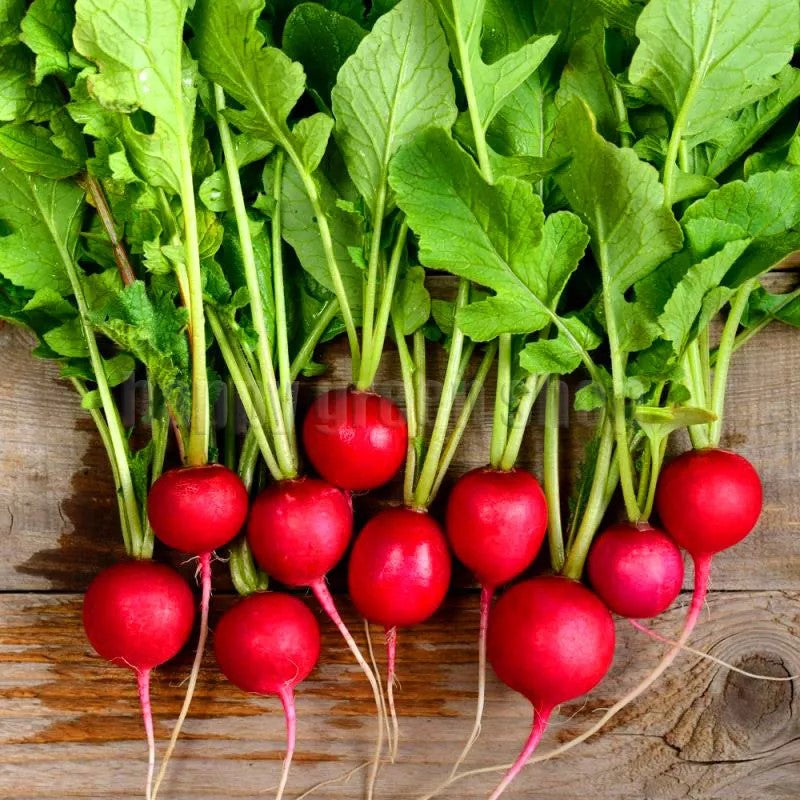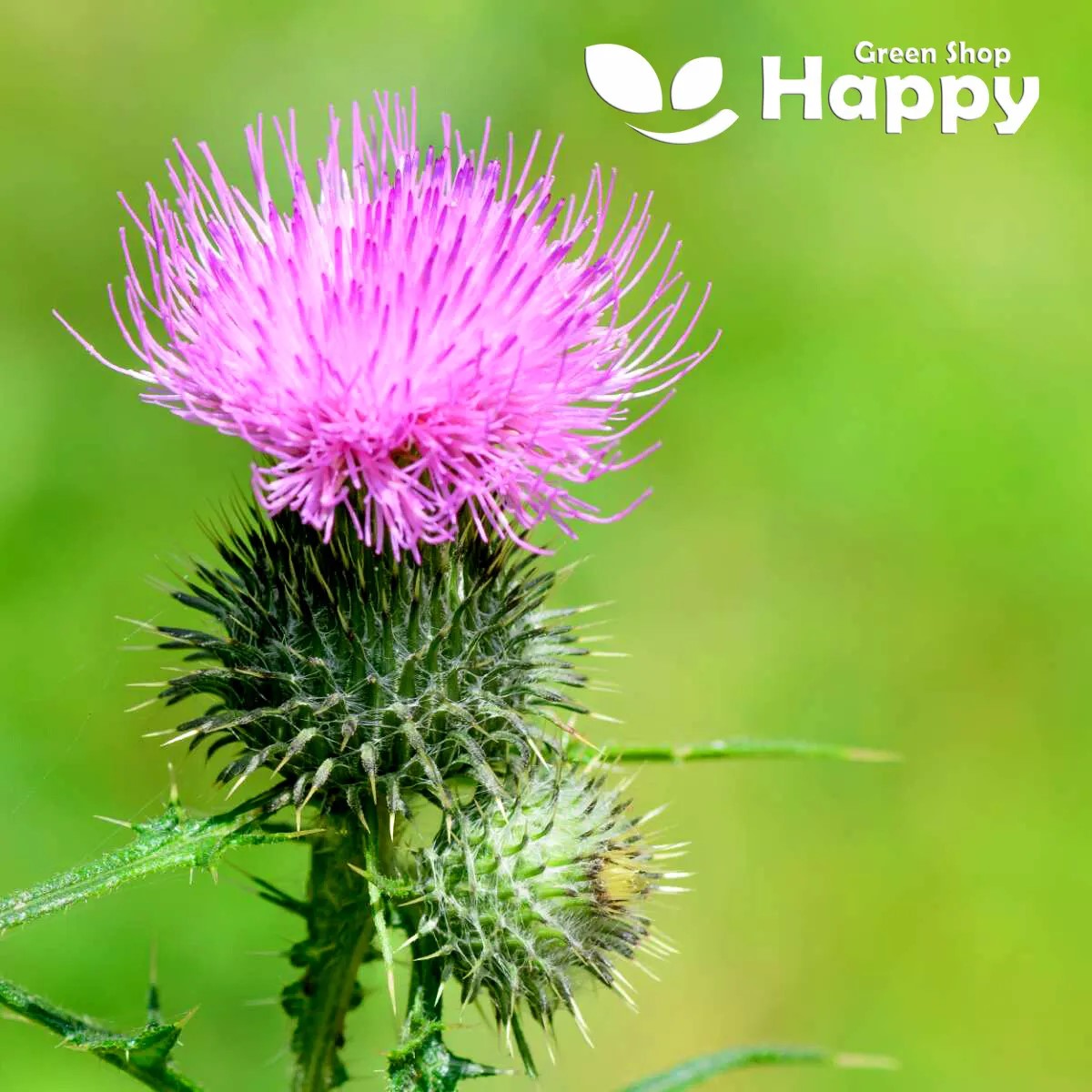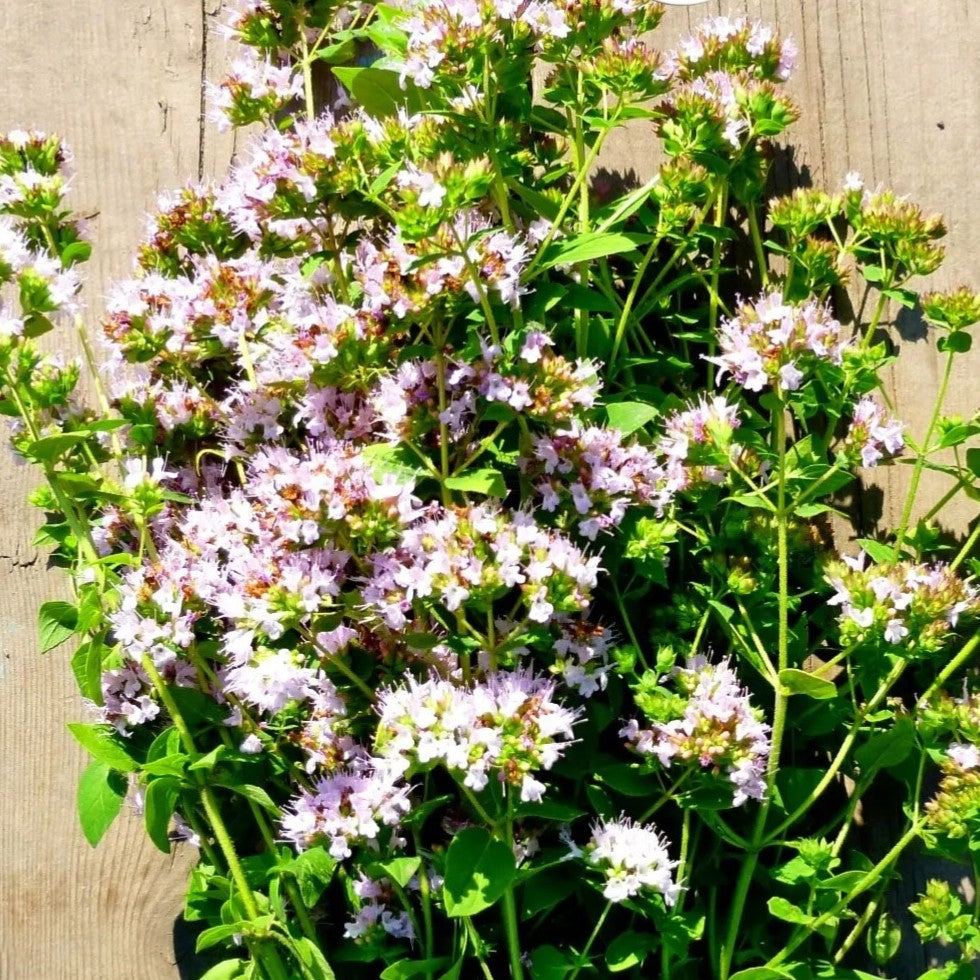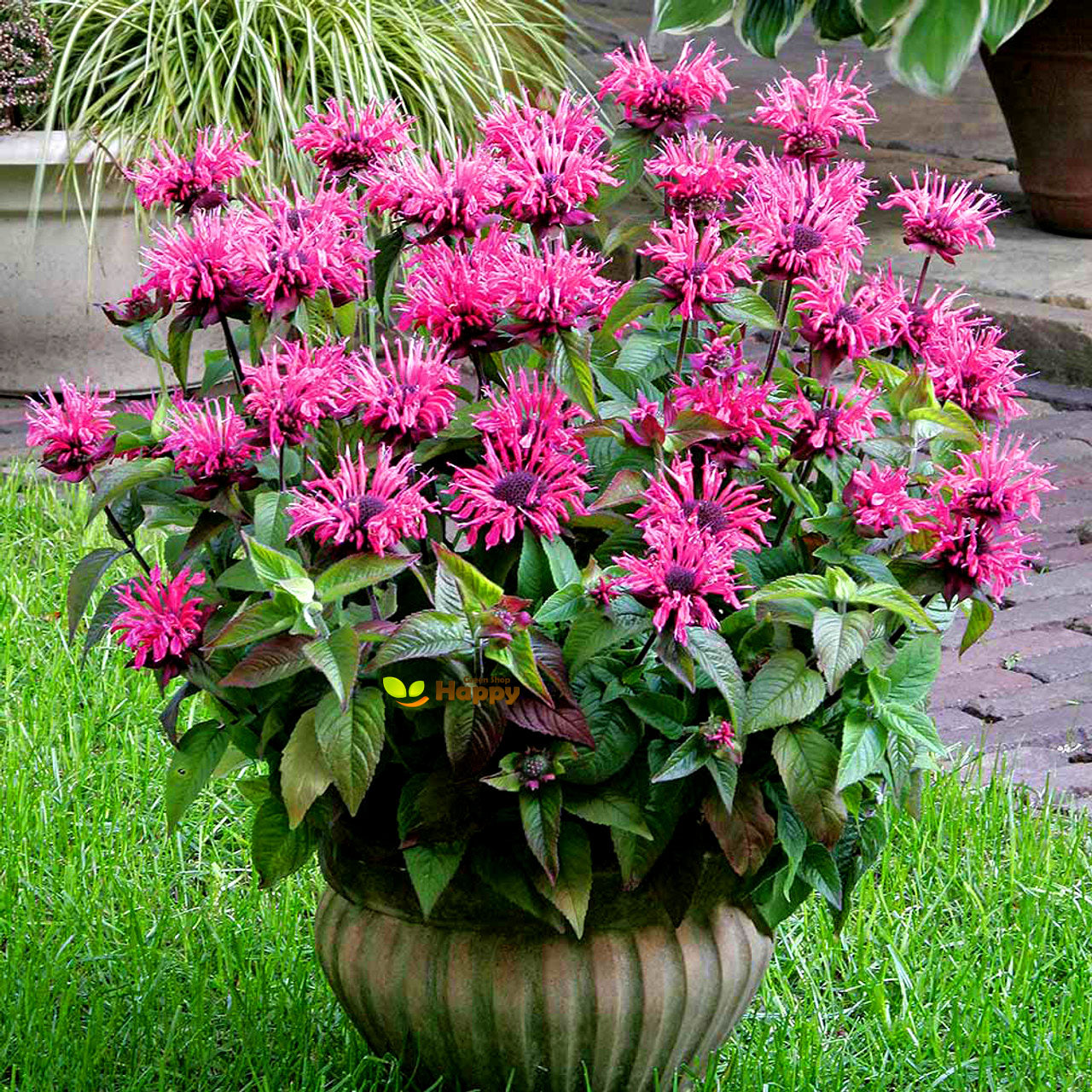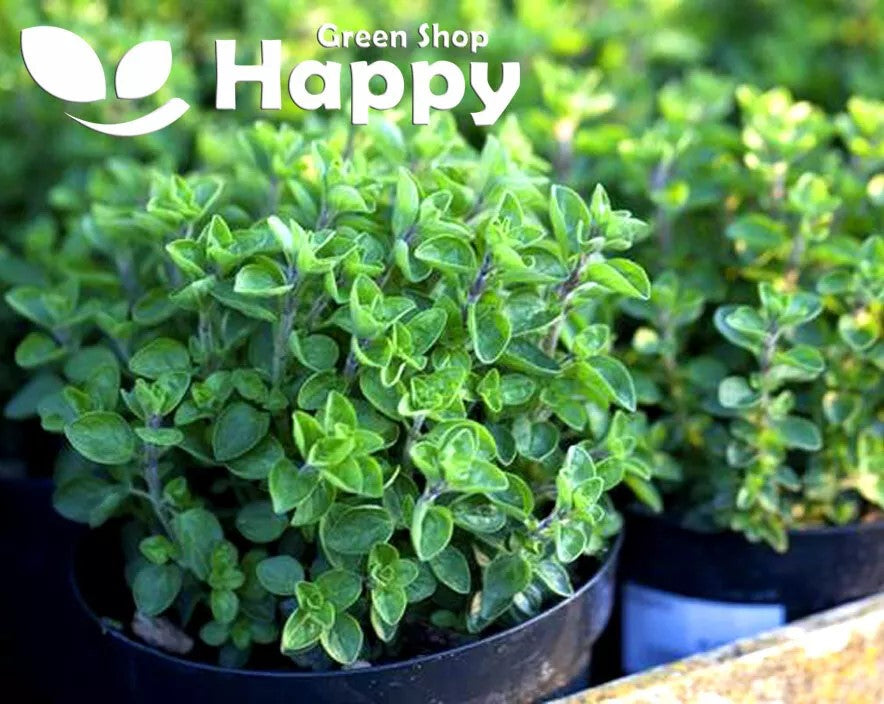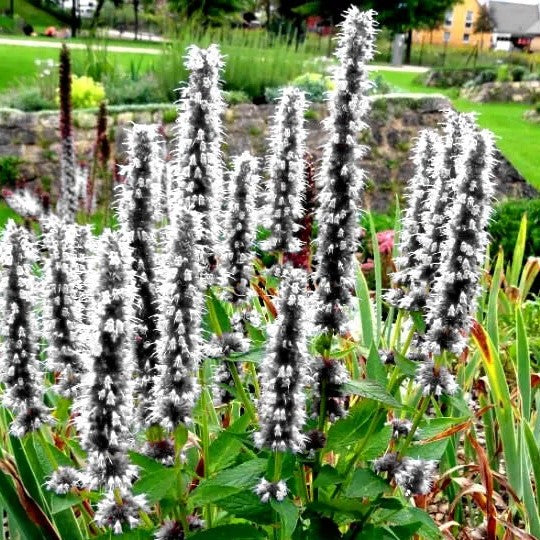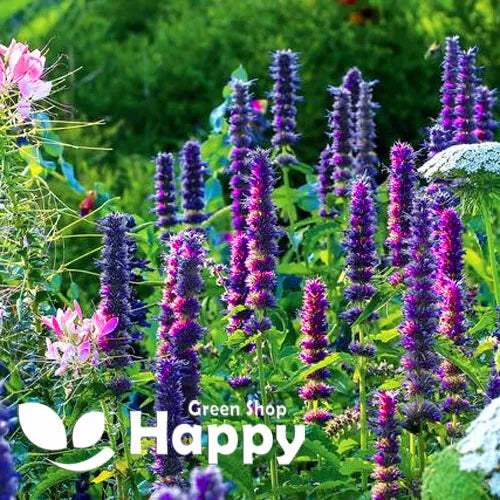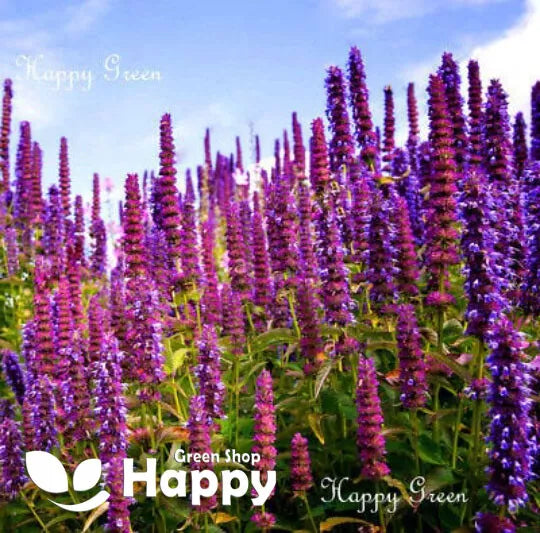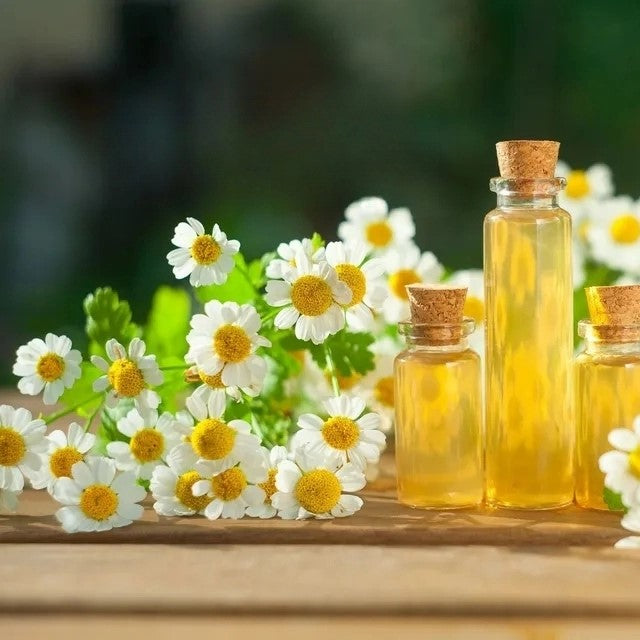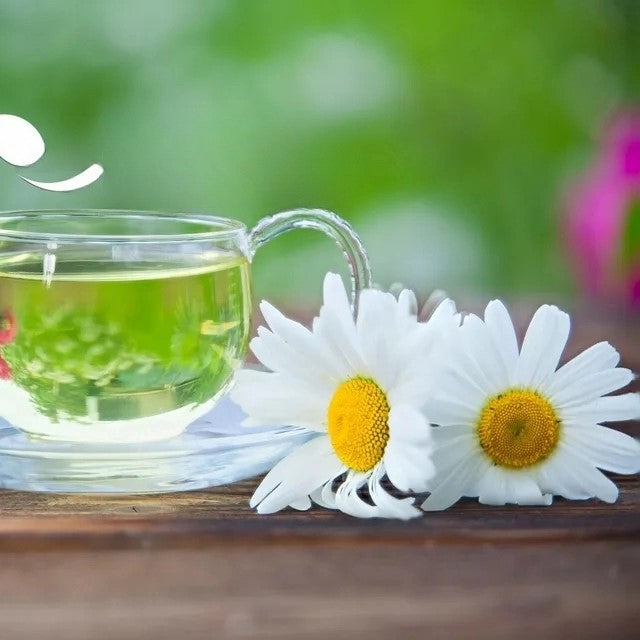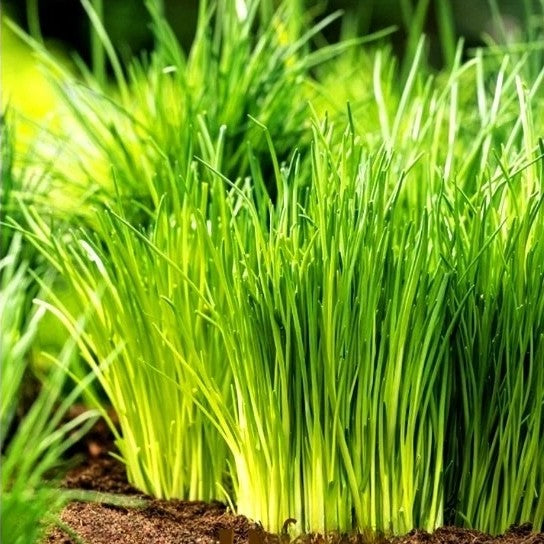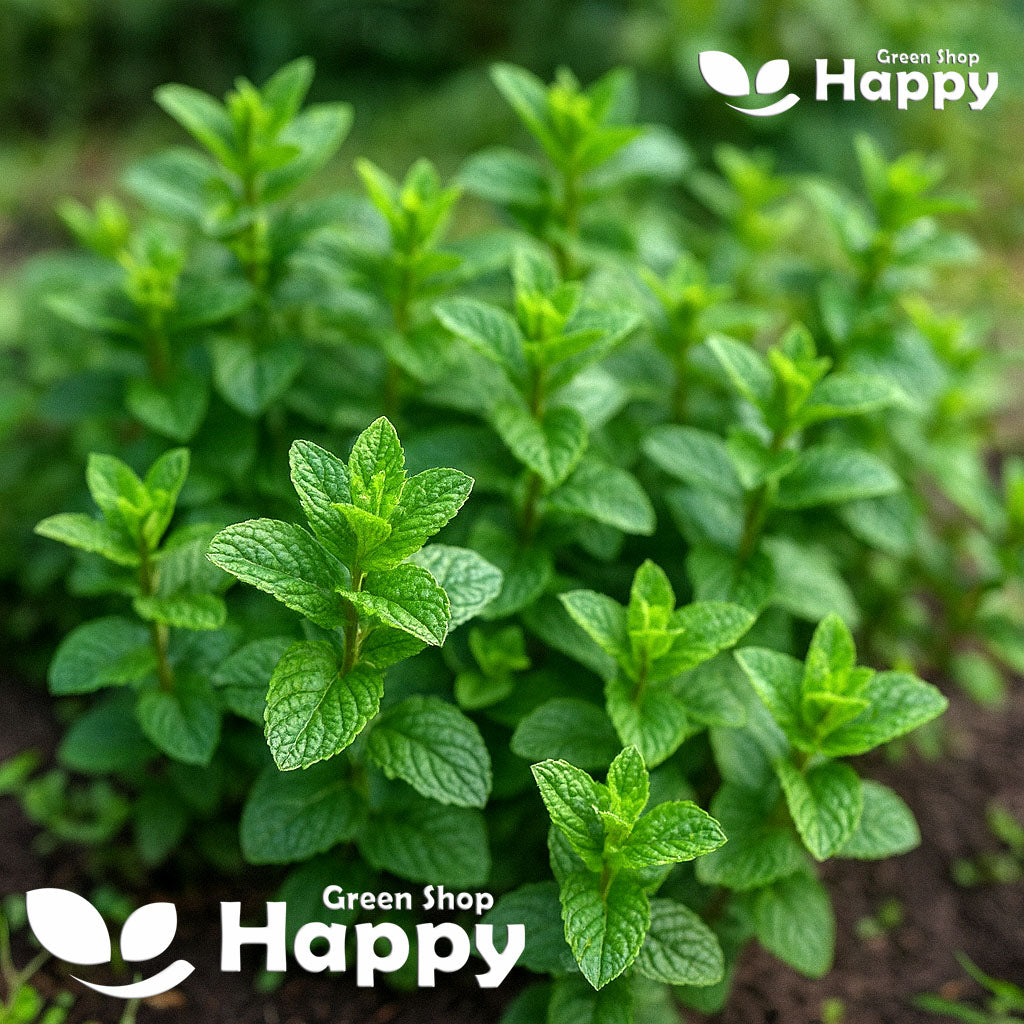Sort by:
54 products
54 products
HERB BEE BALM SEEDS (Monarda didyma)
Add vibrant color and fragrance to your garden with Herb Bee Balm. This perennial produces striking red, pink, or purple flowers atop aromatic foliage, attracting bees, butterflies, and hummingbirds. Easy to grow and low-maintenance, it’s perfect for borders, beds, and pollinator-friendly gardens.
Why Grow "Herb Bee Balm"
-
Showy, fragrant flowers in red, pink, or purple
-
Attracts bees, butterflies, and hummingbirds
-
Low-maintenance, long-flowering perennial
-
Enhances borders, beds, and pollinator gardens
Key Features
-
Type: Perennial (Monarda didyma)
-
Height: 60–90 cm
-
Flowering: Summer (June–September)
-
Position: Full sun to partial shade
-
Uses: Borders, flower beds, pollinator gardens, containers
Ideal For
-
Adding vibrant color and fragrance to borders and beds
-
Pollinator-friendly gardens
-
Containers and patio planting
-
Beginner gardeners seeking easy-to-grow perennials
Sowing & Growing
-
Sow indoors: 6–8 weeks before the last frost
-
Sow outdoors: After frost danger has passed
-
Germination: 10–20 days
-
Space seedlings: 30–40 cm apart
-
Prefers well-drained soil and full sun for best flowering
Greek Oregano – Seeds (Origanum hirtum)
Greek Oregano (Origanum hirtum) is a robust perennial herb, prized for its intensely aromatic leaves that are essential in Mediterranean cooking. Known for its strong flavor, it is a must-have for seasoning pizzas, pasta, roasted meats, and vegetables. Easy to grow and drought-tolerant, it also produces clusters of small white flowers that attract bees and other pollinators.
Why Grow Greek Oregano?
-
Classic Mediterranean herb with strong, authentic flavor
-
Hardy perennial, easy to maintain
-
Drought-tolerant and thrives in poor soils
-
Attracts bees and pollinators when in bloom
Key Features
-
Type: Perennial herb
-
Height: 30–60 cm
-
Spread: 30–45 cm
-
Flowering: June–August
-
Position: Full sun
-
Soil: Light, well-drained
Ideal For
-
Culinary herb gardens
-
Mediterranean and rock gardens
-
Container growing
-
Pollinator-friendly borders
Sowing & Growing
-
Sow indoors: February–April in trays/pots
-
Germination: 10–21 days at 18–22°C
-
Transplant outdoors: After frost risk has passed
-
Direct sow outdoors: May–June
-
Spacing: 25–30 cm apart
-
Harvest leaves regularly for best flavor
Tip: Trim plants after flowering to keep them compact and encourage fresh growth.
Giant Hyssop White – Seeds (Agastache mexicana)
Giant Hyssop White (Agastache mexicana) is a stunning perennial that produces elegant white flower spikes with a delicate fragrance. Blooming from summer to early autumn, its aromatic foliage and nectar-rich flowers are a magnet for bees, butterflies, and hummingbirds. Hardy, drought-tolerant, and easy to grow, it adds vertical structure, fragrance, and brightness to borders, herb gardens, and pollinator-friendly plantings.
Why Grow "Giant Hyssop White"
-
Tall spikes of elegant white flowers
-
Fragrant foliage with a long flowering season
-
Hardy, drought-tolerant, and low-maintenance
-
Highly attractive to pollinators
Key Features
-
Type: Perennial (Agastache mexicana)
-
Height: 60–100 cm
-
Flowering: Summer to early autumn
-
Position: Full sun
-
Uses: Borders, herb gardens, cottage gardens, pollinator planting
Ideal For
-
Adding height and brightness to borders
-
Pollinator-friendly and wildlife gardens
-
Cottage-style and herb gardens
-
Drought-tolerant, easy-care planting
Sowing & Growing
-
Sow indoors: February–April in trays or pots
-
Sow outdoors: April–May after frost
-
Germination: 14–21 days at 18–22°C
-
Thin seedlings 25–30 cm apart
-
Prefers well-drained soil in full sun
-
Water sparingly once established
Giant Hyssop Blue – Seeds (Agastache mexicana)
Giant Hyssop Blue (Agastache mexicana) is a striking perennial producing tall spikes of fragrant blue-purple flowers from summer to early autumn. Its aromatic foliage and nectar-rich blooms make it highly attractive to bees, butterflies, and hummingbirds, ensuring a lively pollinator-friendly garden. Easy to grow and drought-tolerant once established, it adds height, color, and fragrance to borders, herb gardens, and cottage-style beds.
Why Grow "Giant Hyssop Blue"
-
Tall spikes of vibrant blue-purple flowers
-
Aromatic foliage with a long flowering season
-
Hardy, drought-tolerant, and easy to grow
-
Excellent pollinator magnet
Key Features
-
Type: Perennial (Agastache mexicana)
-
Height: 60–100 cm
-
Flowering: Summer to early autumn
-
Position: Full sun
-
Uses: Borders, herb gardens, cottage gardens, pollinator planting
Ideal For
-
Adding vertical height and fragrance to borders
-
Pollinator-friendly and wildlife gardens
-
Cottage and herb garden displays
-
Drought-tolerant, low-maintenance planting
Sowing & Growing
-
Sow indoors: February–April in trays or pots
-
Sow outdoors: April–May after frost
-
Germination: 14–21 days at 18–22°C
-
Thin seedlings 25–30 cm apart
-
Prefers well-drained soil in full sun
-
Water sparingly once established
German Chamomile – Seeds (Matricaria recutita)
Bring calm and fragrance to your garden with German Chamomile, a charming annual herb prized for its daisy-like white flowers and soothing aroma. Traditionally used for herbal teas and natural remedies, this variety is easy to grow, highly productive, and also attracts pollinators to your garden. A perfect choice for herb beds, borders, and pots.
How to Grow
. Sow indoors from February to April, lightly pressing seeds onto the surface of moist compost – do not cover as they need light to germinate
. Transplant seedlings outdoors after the last frost, spacing 20–25 cm apart
. Alternatively, sow outdoors directly in April to May in well-drained soil
. Prefers a sunny position with average to light soil
. Water sparingly, as chamomile thrives in slightly dry conditions
Key Features
. Delicate white blooms with yellow centers
. Traditional herb for calming teas and remedies
. Attracts bees, butterflies, and beneficial insects
. Easy to grow, tolerant of poor soils
. Ideal for borders, herb gardens, and containers
Ideal For
. Herbal tea lovers and home remedies
. Pollinator-friendly gardens
. Cottage gardens and borders
. Container growing
Sowing & Harvest
. Sow: February – May
. Harvest: June – September
Quick Tip
Harvest flowers on warm, dry days and dry them for homemade chamomile tea with the best flavor and aroma.
Garlic Chives – Seeds (Allium tuberosum)
Garlic Chives are a hardy perennial herb prized for their mild garlic flavor and tender, flat green leaves. Perfect for enhancing salads, soups, stir-fries, and garnishes, these chives bring a fresh, aromatic touch to any dish.
Easy to grow and low maintenance, Garlic Chives thrive in garden beds, containers, or raised planters. They are also tolerant of colder climates and will return year after year with minimal care.
How to Grow
-
Sow indoors: February – April
-
Sow outdoors: March – May
-
Plant spacing: 20–25 cm between plants
-
Position: Full sun to partial shade
-
Soil: Fertile, well-drained soil enriched with compost
-
Care: Keep soil consistently moist; trim regularly to encourage fresh growth
Key Features
-
Hardy perennial with tender, flat green leaves
-
Mild garlic flavor ideal for salads, soups, stir-fries, and garnishes
-
Easy to grow and low maintenance
-
Suitable for garden beds, containers, or raised planters
-
Returns year after year with minimal care
Harvest
-
Harvesting period: 60–90 days after sowing
-
Snip leaves as needed; regular harvesting promotes continuous growth.
Short Tip
Trim regularly to prevent flowering and maintain tender, flavorful leaves throughout the season.
Fine Leaved Chives Seeds (Allium schoenoprasum)
Add fresh, mild onion flavor to your dishes with Fine Leaved Chives, a classic herb with slender, dark green leaves and delicate edible flowers. Ideal for salads, soups, sauces, and garnishes, this perennial herb is easy to grow and provides harvests year after year. Its compact growth habit makes it perfect for garden beds, borders, and containers.
How to Grow
-
Sow indoors 6–8 weeks before the last frost or directly outdoors in spring.
-
Prefers fertile, well-drained soil in full sun or light shade.
-
Sow seeds 0.5 cm deep in rows 20–25 cm apart.
-
Thin seedlings to 15 cm apart.
-
Harvest leaves regularly to encourage bushy growth.
Key Features
-
Perennial herb with fine, slender leaves
-
Mild, fresh onion flavor for culinary use
-
Compact and easy to grow in beds or containers
-
Long-lasting harvest year after year
-
Attractive edible purple flowers
Ideal For
-
Fresh salads, soups, sauces, and garnishes
-
Container and herb gardens
-
Gardeners seeking perennial, low-maintenance herbs
-
Adding flavor and ornamental interest to beds
Sowing
-
Best time: Early spring indoors or direct sow outdoors
-
Depth: 0.5 cm
-
Row spacing: 20–25 cm
-
Plant spacing: Thin to 15 cm apart
-
Harvest: From 8–10 weeks after sowing
Quick Tip
-
Trim leaves regularly to promote fresh, tender growth and prevent flowering if desired.
Dwarf Spearmint – Seeds (Mentha spicata)
The Dwarf Spearmint is a compact and aromatic herb, prized for its refreshing flavor and versatility. With its smaller, bushy growth habit, it’s perfect for container gardening, herb borders, and kitchen windowsills. Its bright green leaves bring a cool, sweet taste to teas, salads, desserts, and savory dishes, while also offering natural health benefits.
How to Grow
-
Sow seeds indoors in early spring or directly outdoors after frost.
-
Scatter seeds thinly on the surface of moist soil and lightly press down.
-
Keep in a sunny to partly shaded spot with regular watering.
-
Harvest young leaves as needed to encourage fresh growth.
Key Features
-
Compact, bushy spearmint variety
-
Refreshing sweet-mint flavor
-
Excellent for containers, windowsills, and small spaces
-
Perennial herb with continuous harvests
-
Culinary and medicinal uses
Ideal For
-
Fresh teas, cocktails, and infused water
-
Salads, sauces, and desserts
-
Small gardens, pots, and indoor growing
Sowing & Harvest
-
Sow: March to June
-
Harvest: May onwards, throughout the season
Quick Tip
-
Regular trimming keeps plants compact and prevents them from spreading too aggressively.
Dwarf Parsley 'Moss Curled 2' Seeds (Petroselinum crispum)
Enhance your garden and kitchen with Dwarf Parsley 'Moss Curled 2', a compact, slow-growing variety producing dense, bright green, finely curled leaves. Ideal for both ornamental and culinary use, its vibrant foliage adds texture to salads, garnishes, and cooked dishes. Perfect for containers, herb beds, and borders, it’s a versatile herb for every gardener.
How to Grow
-
Sow indoors in early spring or directly outdoors after frost.
-
Use fertile, well-drained soil in sun or partial shade.
-
Sow seeds 0.5 cm deep in rows 20–25 cm apart.
-
Thin seedlings to 15–20 cm apart for strong growth.
-
Harvest leaves regularly to encourage bushiness.
Key Features
-
Dwarf, slow-growing parsley with finely curled, bright green leaves
-
Dual-purpose: culinary use and ornamental appeal
-
Compact size suitable for containers and small gardens
-
Long cutting period for continuous harvest
-
Easy to grow for beginners and experienced gardeners
Ideal For
-
Fresh salads, garnishes, and cooked dishes
-
Container gardens, herb beds, and borders
-
Gardeners seeking compact, productive herbs
-
Year-round kitchen harvest
Sowing
-
Best time: Spring or early summer
-
Depth: 0.5 cm
-
Row spacing: 20–25 cm
-
Plant spacing: Thin to 15–20 cm apart
-
Position: Sun or partial shade, fertile soil
Quick Tip
-
Pinch outer leaves regularly to encourage bushier growth and longer harvests.
Showing 45/54



